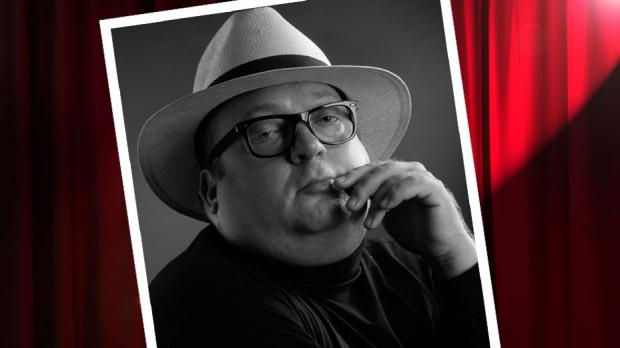The Kavinoky Bounces Back
- Anthony Chase

- Mar 13, 2019
- 4 min read
Updated: Mar 14, 2019
A textbook example of public relations in the midst of a crisis

By ANTHONY CHASE
The opening of a stage adaptation of George Orwell’s 1984 at the Kavinoky Theatre this Friday is nothing less than heroic. When the producers of the current Broadway production of To Kill a Mockingbird, written by Aaron Sorkin and produced by Scott Rudin, shut down the Kavinoky production of the Christopher Sergel version, just ten days before opening, they leapt into action.
What ensued was a textbook example of how to manage the message and come out looking good. Thoughtful public relations undertaken by theater staff and D’Youville College allowed the Kavinoky to take a potential audience relations calamity, and turn it into an opportunity to put the theater on even firmer footing with the public. Thrust into the national spotlight, the theater portrayed itself as The Little Engine that could.
Yes, the cancellation was a devastating blow, but what choices did they have? They demolished the To Kill a Mockingbird set (with a New York Times photographer clicking away) and quickly announced that they’d be staging an adaptation of George Orwell’s 1984.
Before they were done, New York producer Scott Rudin, who had been portrayed as a bully in a New York Times article, called the Kavinoky executive artistic director Loraine O’Donnell to apologize personally. He also offered her rights to the Aaron Sorkin adaptation of To Kill a Mockingbird, Broadway’s hottest hit, for free. He would do the same for every theater affected.
Step by step, this was the Kavinoky strategy:
1. They took the high road.
At no point did the theater assign blame or come out swinging. There was no scratching or biting. No tears and recriminations. All of their responses were dignified and courteous.
2. They established their innocence and good faith.
The theater put all of its cards on the table and provided a timeline of when they contracted for rights to the play; when they first heard of the upcoming Broadway production; what they had been told by the licenser of the Christopher Sergel version; and how they learned they had a problem.
3. They positioned themselves as “The Underdog.”
If there is no crisis, there is no triumph. The theater clearly established that the forced cancellation was more than a bump in the road. All sympathy went to their side. Before they were done, they had established themselves as the spokespeople and champion of every small professional, university, community, school theater that had been shut down across the country. I’d expect patrons to be especially generous in the next round of fundraising. The Neil Garvey Fund has already kicked in to help compensate for losses.
4. They acted decisively.
There was no wobbling or flip-flopping. Recognizing that they could not win, the theater determined to cancel To Kill a Mockingbird, replace it with another title that was also adapted from a book, also in the New York State school curriculum, and that also needed a large cast. Patrons had a very clear sense of what was happening.
5. They communicated with their audience before they spoke to the press.
The Kavinoky audience was the first constituency to know what was going on. This is always better than having your patrons hear gossip on the street.
6. They communicated with the press swiftly and openly.
As soon as letters had gone out to ticket holders, the theater spoke to the press, delivering a clear, candid, and consistent message.
7. They provided a human face for the situation.
Not content with the letter and prepackaged press statements, the college and theater demonstrated both the human cost of the cancellation and their firm control over the situation by giving the story a human face. After the original print statements, Kavinoky executive artistic director Loraine O’Donnell was made available for interviews. This emphasized the Kavinoky’s position as most honest player in the game. It might also have helped assuage some of the damage done by the ham-fisted removal of the theater’s founding artistic director, David Lamb last year.
8. They moved on.
The theater quickly began to promote their new high tech staging of 1984, providing photography and generating excitement. They showed everything from child actors who would not longer be doing Mockingbird, to the high tech set that replaces the demolished Mockingbird set.
In short, the Kavinoky became a phoenix rising triumphantly from the ashes. They solidified the devotion of their audience. They established themselves as heroes. They expanded their reach with the press. The reaffirmed the resilience of their theater and its prominence in Western New York and beyond. They reminded Western New York that the Kavinoky is the region’s largest, and perhaps most feisty and resilient producing house.
Oh. And in case you hadn’t heard… the Kavinoky production of 1984 opens on Friday.
There will be one pay-what-you-can preview performance Thursday March 14th at 7:30 p.m. with opening night on Friday, March 15th. 1984 runs through Sunday, April 7th. Show times are: Thursdays and Fridays at 7:30 p.m., Saturdays at 3:30 p.m. and 7:30 p.m., and Sundays at 2:00 p.m. The gala opening night performance will be held on Friday, March 15th at 7:30 p.m. and includes a reception with the cast following the performance. There is no performance Friday, April 5th.









